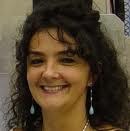Workshop on QUANTUM INFORMATION AND FOUNDATIONS OF QUANTUM MECHANICS
Quantum Mechanics and Information: Experiments
Experimental tests of quantum mechanics: Pauli Exclusion Principle and spontaneous collapse models
>PRESENTATION:
Primo Ricercatore dell'Istituto Nazionale di Fisica
Nucleare, Laboratori Nazionali di Frascati. Ha svolto il dottorato di ricerca nell'ambito
dell'esperimento OBELIX (CERN) nel campo della spettroscopia dei mesoni esotici. Ha coordinato
il gruppo dei INFN-LNF nell'esperimento DEAR. Attualmente e' responsabile nazionale
dell'esperimento SIDDHARTA, spokesperson dell'esperimento VIP (LNGS), e coordinatore INFN per
vari progetti EU nell'ambito del VII Programma Quadro dell'EU, HadronPhysics2. Ha coordinato
il progetto EOS --Notte Europea dei Ricercatori (Researchers' Night, Support Action FP7) nel
2008.

Experimental
undergoing tests of the Pauli Exclusion Principle violation will be presented, together
with future plans to measure the spontaneous emission of X rays predicted in collapse
models.
We present a method of searching for possible small violations of the Pauli Exclusion Principle
(PEP) for electrons, through the search for "anomalous" X-ray transitions in copper
atoms, produced by "fresh" electrons (brought inside the copper bar by circulating
current) which can have the probability to do the Pauli-forbidden transition to the 1
s level already occupied by two electrons. We describe, then, the VIP (VIolation of
PEP) experiment, in data taking since 2006 at the Gran Sasso underground
laboratories.
The goal of VIP is to test the PEP for electrons with unprecedented
accuracy, down to a limit in the probability that PEP is violated at the level of
10**-29 - 10*e*-30, improving the previous limit by 3-4 orders of magnitude.
We
report preliminary experimental results and briefly discuss some of the
implications of a possible violation, together with future plans to gain other 2-3
orders of magnitude.
We will then present a project to use a similar experimental
technique to measure the spontaneously emitted X rays predicted in the framework
of collapse models (GRW theory, dynamical reduction models). Such models were put
forward alternatively to the "standard" quantum mechanics' Schrodinger equation,
followed by a "alla von Neumann" collapse of the wave-function, implementing a
(nonrelativistic) dynamical reduction/collapse models, by modifying with a
non-linear and stochastic terms the Schrodinger equation. Baring on the
importance of this conceptually new model(s), it is of utmost importance to study
its experimental consequences, where the predictions are diverging from the
standard equations, and to perform dedicated experiments to check it.
Today there
are very few and far from complete experimental information. We aim to perform a
feasibility study for a dedicated experiment to check the collapse
models.